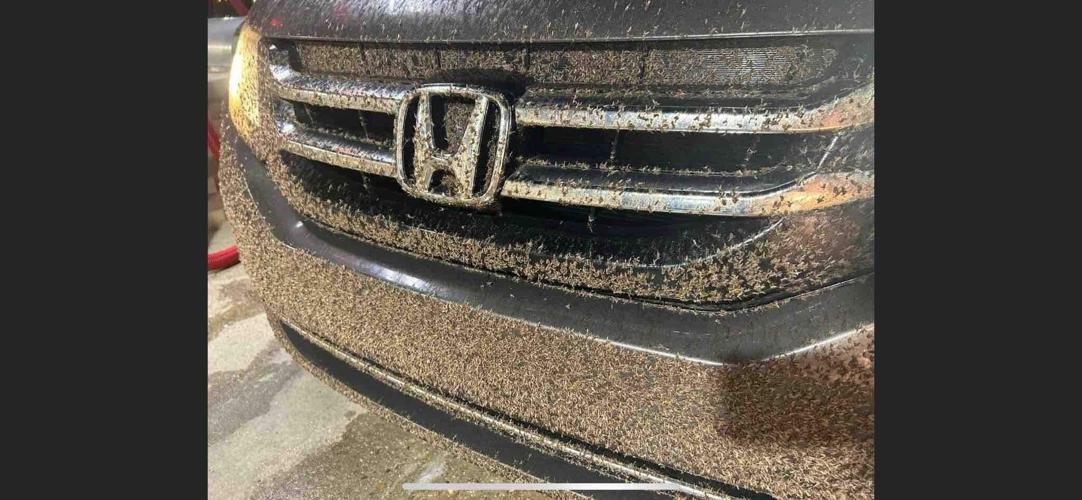Drivers beware: Millions of midge flies are swarming the region, leaving a shroud of bug corpses stuck to car surfaces that can be difficult to clean off.
Terry Plaisance experienced them recently on a drive across the Lake Pontchartrain Causeway, when it felt like she was driving through a heavy rainstorm. Only it wasn’t rain, she said. It was flies. “My entire grill and side mirrors were completely covered like a thick fly frosting,” she said.
Oh, and they stink -- like rotting fish, Plaisance said.
The midge flies are freshwater insects that tend to swarm in waves around the same time each year. They mostly generate from the swampy areas around Lake Pontchatrain, said Nick DeLisi, an entomologist with the St. Tammany Parish Mosquito Abatement District.
DeLisi said they come out in the spring each year and tend to leave before it gets too hot.
DeLisi said the last time there was a big surge was in 2019 when the Bonnet Carre Spillway was opened for a record 75 days to manage high water levels in the Mississippi River, which was swollen from heavy rains. As a result, freshwater fed into Lake Pontchartrain, creating a perfect breeding ground for the pesky insects.

Motorist Blake Campo uses liquid wax, the only liquid he had, to clean his bug covered windshield, which became opaque after driving through swarms of blind mosquitoes, or aquatic midges, on the Causeway Bridge over Lake Pontchartrain, in Jefferson Parish, La., outside New Orleans Tuesday, June 18, 2019. Billions of mosquito lookalikes are showing up in the New Orleans area, blanketing car windshields, littering the ground with bodies and even scaring some folks. They're aquatic midges, also called "blind mosquitoes," but these flies don't bite. However, the Motorist Assistance Patrol on the 24-mile-long Lake Pontchartrain Causeway has been stocking extra water to slosh down windshields. (AP Photo/Gerald Herbert)
“You're not going to find them in really brackish water like if you go to the center of Lake Pontchartrain or in the Gulf [of Mexico.] They're not coming from those areas, but certainly along the swamps and along the bayous all across St Tammany,” said DeLisi.
Also called “blind mosquitos” or “non-biting midges,” they are attracted to light, which could account for the hordes of flies that flock to vehicles at night.
“They hit my car by the thousands and make it hard to see out of the windshield,” Plaisance said, adding that it took three manual scrubs and two rides through the carwash to get the majority off.
“And they stink to high heaven when they get wet, like rotting dead fish,” she said.
The Causeway, which spans 24 miles across the lake, has been particularly blighted by the pests.
Causeway General Manager Carlton Dufrechou said the bugs are unpredictable and a nuisance, but they’re good for the environment. Research shows the bugs are an important food source for fish, birds, and other aquatic insects.
Dufrechou said they often hang in pockets moving from one section of the bridge to another.
“If anyone happens to run into a swarm of them. Just keep driving. If it’s really thick, don't turn on your windshield wipers because it'll actually make it worse," Dufrechou said.
If drivers feel unsafe, they can pull over to one of the shoulders or a crossover and call the bridge’s motor assistance department, he said.




